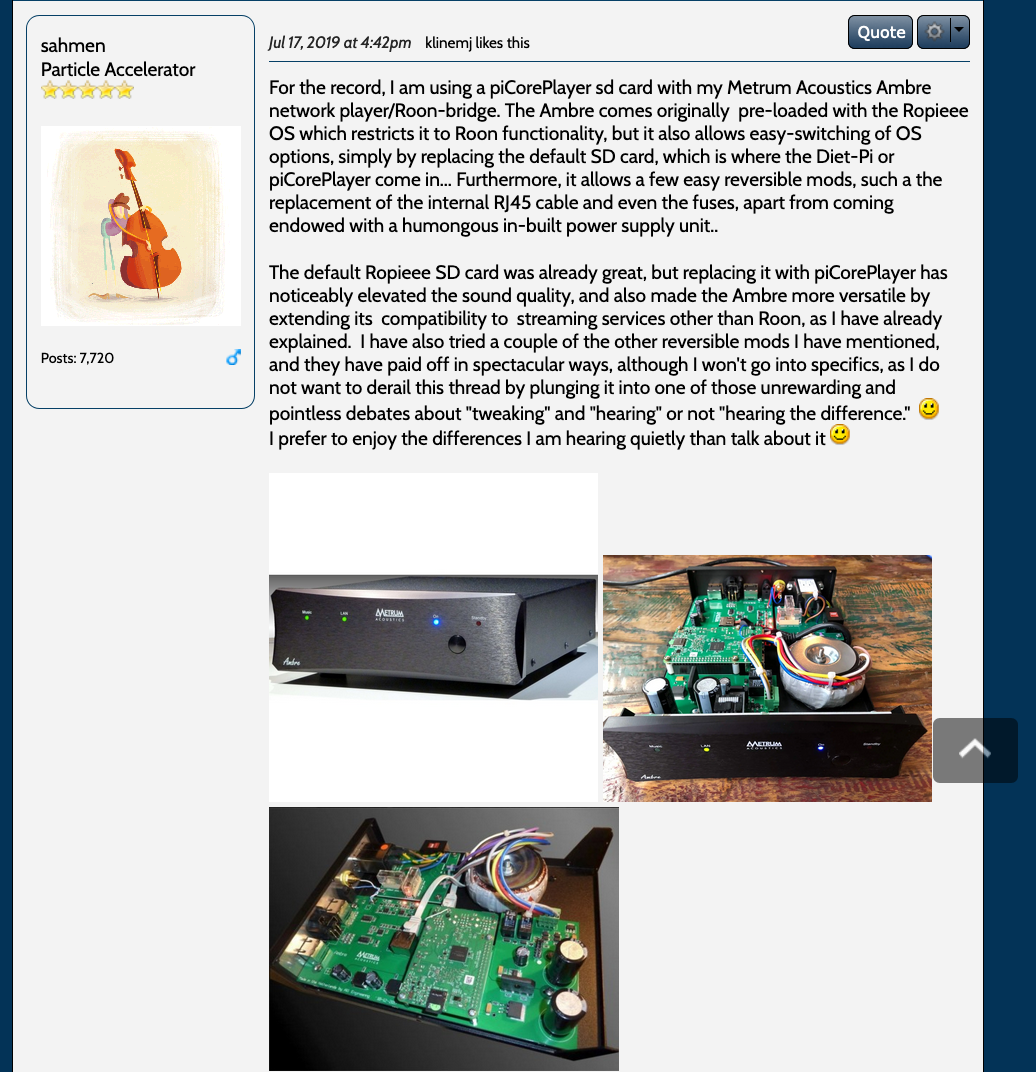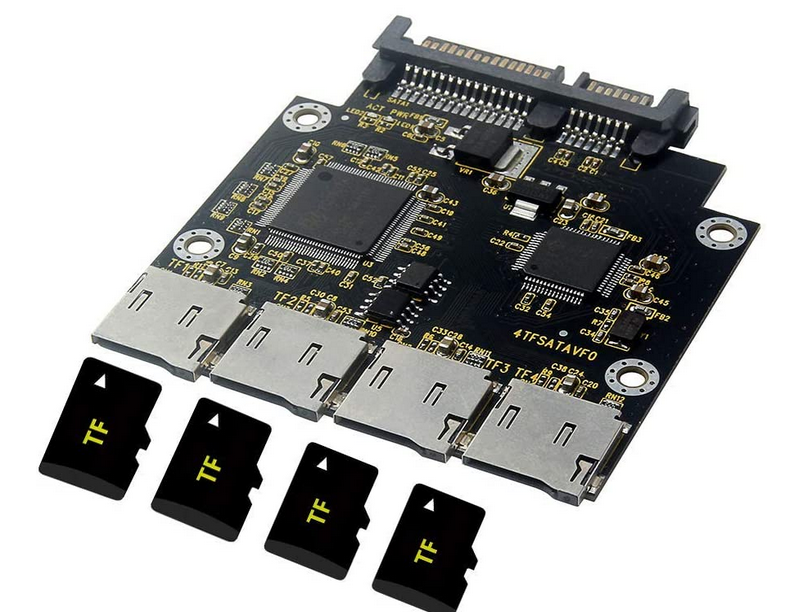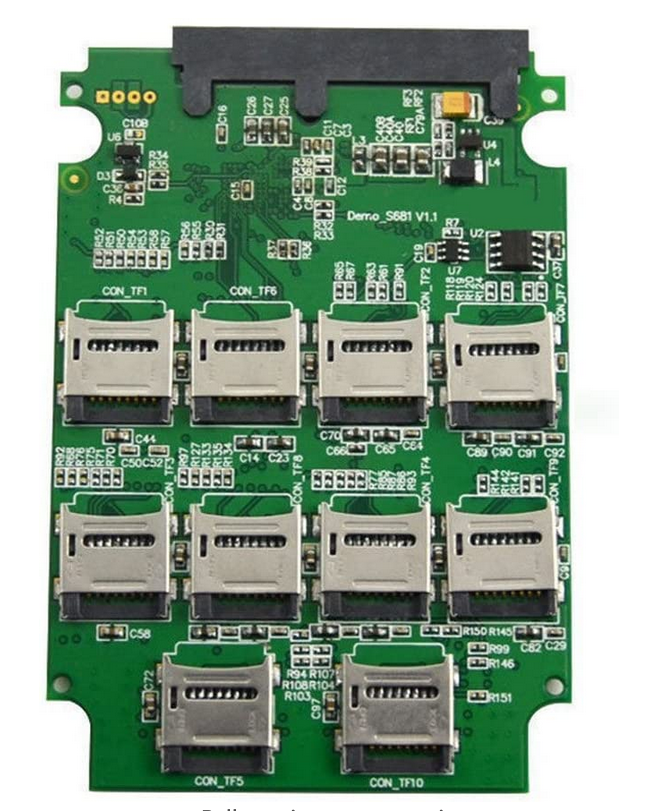acs236
Headphoneus Supremus
- Joined
- May 24, 2002
- Posts
- 3,338
- Likes
- 44
Any advantage to getting the board for the coaxial output or is that just if your dac doesn't support usb?
Any advantage to getting the board for the coaxial output or is that just if your dac doesn't support usb?
Yes, a pretty major advantage. It completely bypasses the internals of the RPi. For me, I want to bypass USB anything. With a HAT optical board, the PCM data is CPU processed then travels via the i2S bus directly to the WM8804 optical converter then via glass optical. No USB involved or any internals. It's complete noise-free sound purity.
I'm using a Chord Hugo2 which supports USB, coax and optical inputs. The only input that is 100% complete free of noise is the optical input. It also adds depth as I am a depth freak.
I want the shortest cleanest path possible. For example, I was able to bypass the battery pack -> RPi USB pwr input and have direct battery power on the rails. I don't like listening to regulators so bypassing regulators with direct power (equivalent to a car battery power) makes it a joy.
For general use, USB audio is fine; but for my reference rig I want clean sound purity as much as possible.
On another note, I tried full album FLACs. They work fine. As long as they split in XLD, they will split in the LMS ecosystem. All that needs to be done is a "Clear and Rescan". After it rescans, you should see splits as well a a full album option. I believe 1TB scans only take 5 minutes.
Microcenter. I had thought I could use space on the boot microsd in another partition to store files since the operating system is so small. Not a big deal though. This way I just put everything on a separate device.
I had a couple of whole album flac/cue combos. It wasn't reading those so I just split them into separate flac files.
I may experiment a bit with different android squeeze controllers. But it's so much more convenient than my other setup.
I also need to figure out the best way to shut it down when I'm done listening.
No reason not to use the boot volume for music, although it flies against usual practice - just keep a send SD card with a snapshot of your OS volume in case of emergency!
just stick a little physical switch in the case to disconnect the battery when you need to shutdown.
Interesring. I've only used the Pi with my Topping D90 and haven't noticed any noise. But I may try that board. I'm a bit concerned that using the board will require disconnecting the fan, though I'm not sure heat is an issue.

of course. Use hysold and the hysolid ap.Does anyone have a setup where they use a mini PC or other computer essentially as a transport to an extermal dac, and then use either an iPad/iPhone or Android phone to control the PC (select songs, etc.)? Is such a thing possible?



If I'm going to finish my guide, I have to refrain from posting anywhere. So I'll check back on this thread end of month......
Great stuff - I'll look forward to the final review when its doneI suppose I ought to go get hold of a Bryston Pi and do some testing - I've been conducting a fairly unscientific experiment for a few years, namely getting hold of a streamer, plugging it up and then deciding that it still doesn't deliver compared to my ageing microRendu. To date, I've had to hit up into the £2500+ mark to find a unit that outguns the Sonore product. Nearest so far was a Sotm, but even that gets maximally expensive with a PSU and clock. None of the Pi based offerings (or shameless clones!) do the job for me (although its fun to build/hack them!). I do have a Lumin U1 Mini on the way for a tryout, so that will be interesting - not Pi, but I like the idea of a £6500 transport hacked down into a £1700 package......
Good luck with the experiment!
I installed th Hifiberry + pro today, and it sounds great. I'd have to do some back and forth comparison to make tell if I like it better than USB. But I'm really liking this setup. So much better than using my surface as a transport.



